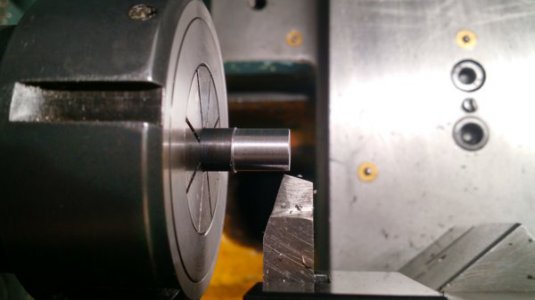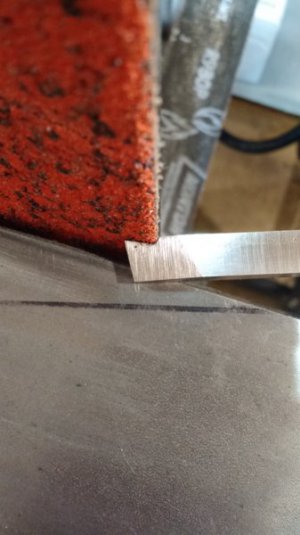One question; Are chip breakers on lathe tools important? Will it make a big difference on heavier cuts? I've seen Chip Breakers ground with Dremel tools.
Thank you for your kind words, Emilio. Like everyone else, just trying to help.
Chip breakers seem to be important to some folks, which is fine, but they are more trouble to grind than they're worth, in my opinion. I'm not just saying that because at one point I spent a lot of time grinding them and seeing for myself what the fuss was about. Let me be clear; chip breakers work if you grind them properly and use them under the right conditions. They are not a panacea for all cutting woes.
A chip breaker has to be near enough to the cutting edge without compromising that edge, and it has to be wide enough to guide the chip. I found that a V-shape doesn't work well because the chip often doesn't flow down the initial face; it goes right over it. What does work is to grind a V and then grind down the front half, toward the cutting edge, and then re-grind the edge. If you look at a chip breaker on a carbide insert you will find that there is a clear cutting edge and a bump to deflect the chip to encourage it to curl and break; this is the same thing I did on a HSS tool and it works much better than a V-shape. It also takes a heck of a lot of work to make one. You can dremel all you want but I bet it won't work much better than having no chip breaker at all. With that said, maybe I have no talent for this sort of thing so take it for what its worth.
I found that the right speed and feed works nearly as well as my early attempts. Aluminum and stainless are the two materials that are notorious for making long, stringy chips but even carbon steels will do it if you take a shallow cut slow enough. If you take a deep enough cut at a fast enough feed rate, aluminum will chip off fine. Granted, some gummier alloys will string out regardless of what you do but for the most part, taking a heavy roughing cut at a slightly faster feed rate helps a lot. To be honest, I just live with the chips and make the cuts I have to make. Sometimes I have a big piece to cut and can take a big roughing cut but more often I'm starting with a piece that is near to my finished size. In that case, I get strings so I speed up my feed and hope for the best.
So, the bottom line FOR ME, is that I don't bother with chip breakers anymore. I have come to the conclusion that grinding a tool that is efficient and cuts well is more important than what it does to the chip, and that it is up to me to use that tool well. Hope this clarifies my personal position.



